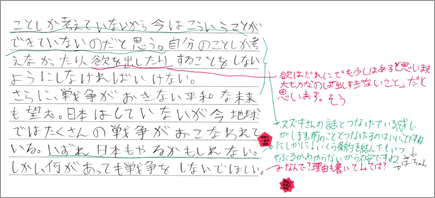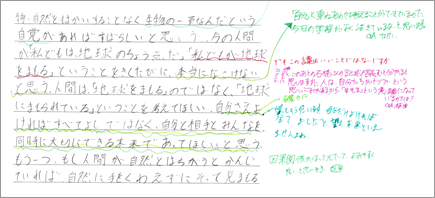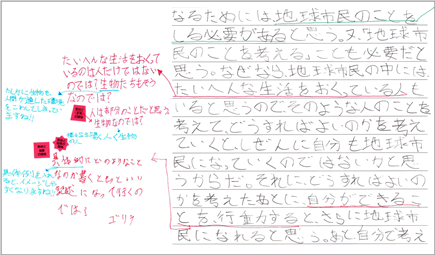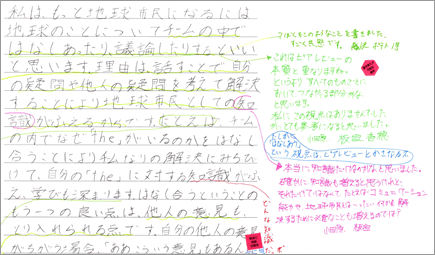Usually people get together to discuss to come to a conclusion. To create a conclusion we need to put different opinions together, deleting and summarizing and send the conclusion from bottom to bottom, in a vertical, hierarchical way.
However, the aim of KCGI was not to come to a conclusion. It did not matter if we had not come to any conclusion as long as each child was allowed to be there as one of the diverse individuals meeting and valuing others’ opinions as well as his/her own. This is why we call it a “lateral” meeting.
Peer Review is a powerful tool to facilitate a lateral meeting.
The following is a simple example of Peer Review. Stay flexible and you will enjoy limitless variations.
1. Rough Stone Writing
Children write on a given theme. At this stage writing is just like a rough stone with lots of gaps in thoughts but looks promising.

2. Red and Green Comments
Preliminary writing is a preparation for expression. Now children go through receptive stage of reading. Children are usually surprised to find how differently their friends wrote on a same topic. They receive and value different feelings, different ideas and different viewpoints. This experience of meeting and accepting non-I arouse a variety of responses within. Children try to put them in words and write them down in different colors; red and green.

3. Blue Comments
The rough stone writing comes back to the writer. It is now filled with a lot of red and green comments by peers. Children read those comments asking themselves “What does he/she mean? “ or “What made him/her write this comment?”. Then they write what rises up within as a reply to red and green comments in blue.

4. Diamond Writing
By now the stone within children must have been polished well. Every child or every stone is a diamond. Each child polishes his/her peers and is polished by them. As transformed and finished diamonds, children write again.
















